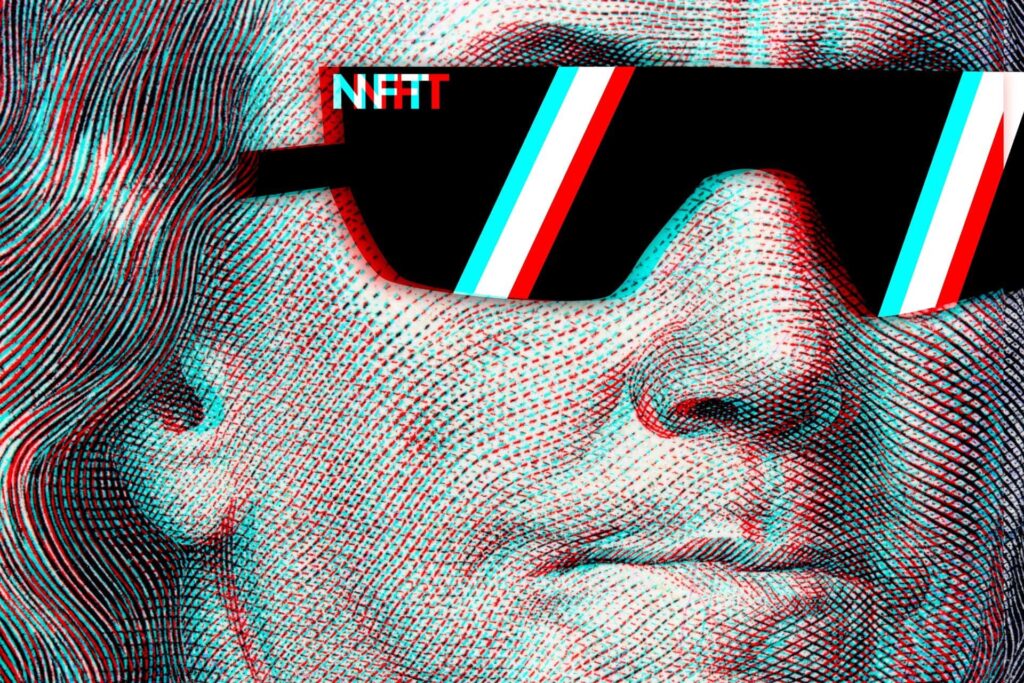Started as a tool for provenance and authenticity evolved to a new approaches to collect, and even create, new art forms. The impact of blockchain technology within the art industry can’t be denied anymore. It is clear that this trend, which is still al little vague at the moment, will gain popularity the coming years. How is blockchain applied within the art industry? And what does this technology bring to the art industry?
Non fungible tokens (NFT’s)
The evolution of non-fungible tokens (NFT’s) allows artists to register their artworks through blockchain technology and translate these artworks into securable sellable assets. The digital art piece receives an unique serial number which entitles the original piece a form of provenance. As the popularity of an art piece increases, the more people are willing to pay for some rights to the original digital art piece. In contrast to physical art pieces, NFT art can be shared and used everywhere.
To demonstrate the growing popularity of NFT art; traditional and well-known auctioned Christie’s has opened has opened its first auction only focused on digital artworks by one single artist. This new-born platform is called Beeple.
Blockchain as fraud preventer
One of the biggest challenges of art markets is to verify the authenticity of the art works where the artist is not alive anymore. A report, published by the Fine Arts Expert Institute (FAEI) in 2014, stated that more than 50% of the artworks they investigated were falsified or not addressed to the right owner. The use of blockchain could change this. Blockchain is believed to be one of the most secure manners to transfer digital data at the moment. This reason lies in the fact that there is no centralized version of the information accessible and hackable for someone with bad intentions. Blockchain is able to track and verify authenticity via timestamps on transactions.


As you stated, authenticity of artists’ work is very important, especially after their death. Therefore it can be a good option to store your artwork on the blockchain. But what I find difficult about online certifications, is the amount of ‘art’ that is published, simply because it is possible for everyone. For example, Ledger Insights published an article showing in august, there were 1.67 million NFT’s traded on the largest marketplace for NFT’s, Opensea, for a total of $3.4 billion. This (in my opinion) creates opportunity for creativity, but also creates lots of noise (or junk, oversaturation, whatever you want to call it) for the art-world to filter the good from the bad (and also gets rid of scarcity as a whole).
Thank you for the article, I had no clue that the ratio for the falsified or the not correctly addressed artwork was this high! It clearly is a problem that blockchain can and will help.
For the NFT part, I believe the era that we currently are in is similar to the dot.com bubble. The reason why they are similar is because the NFT technology and the concept of having the original version of a digital art piece has intrinsic value. Just like an artwork like Marcel Duchamp’s Fountain, the original version of the first tweet of Jack Dorsey will always be valuable. The same concept applied for internet at the end of 1990s. However, because of it being not well understood and creating a huge hype, many non-valuable assets(digital art) are being priced ridiculously, just like the stocks of some firms in 1999 rising 50-200% just because they added “.com” at the end of their company name.
Regardless of whether the NFT scene being a bubble that will burst soon, I believe the steps that are being taken in these times will be very important for shaping tomorrow’s digital art.